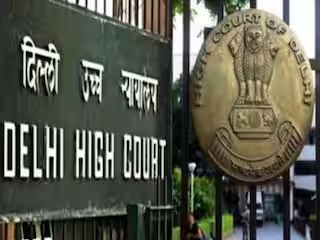Confrontation between Guv and Chief Minister bodes ill for
Administration
BY KALYANI SHANKAR
Decades ago, the first DMK chief minister C.N. Annadurai compared the post of a governor to a redundant goat's beard. It was
after Prime Minister Jawaharlal Nehru dismissed the E M S Namboodiripad government on the recommendations of the then Kerala
Governor on July 31, 1959.
Once again, today, the role of the Governor has come into question with the emergence of multiple regional parties. The issues
between some chief ministers and governors include: selection of the Governor and the chief minister, ‘timing for proving a
legislative majority, taking a long time to give consent to bills and adverse comments on the state's policies and the role of the
chancellor of state universities is also on the list.
The conflicting chemistry between the chief ministers and Governors is not new, as it has been around for a while. Political parties,
mainly the DMK and the CPI-M, have even called for the abolition of the post. Some argue that they are superfluous in a democracy.
During the last few years, the governors of Andhra Pradesh, Karnataka, Delhi, Tamil Nadu, Puducherry, Madhya Pradesh, Kerala,
Maharashtra and West Bengal, to name a few, have not got along with the non-BJP chief ministers. That is why chief ministers like
Mamata Banerjee, K. Chandrashekar Rao, M.K. Stalin and P. Vijayan shout in a chorus for the abolition of the post. They have argued
that governors function as an agent of the Centre and have no accountability except for those who appointed them. Above all, they are
unelected.
Abolishing the post of Governor might be a distant dream, but the issue could be addressed. The Centre-state relationship and the
role of the Governor must be further refined. The Governor is the link between the Centre and the state. He acts as a medium in a
country which promotes cooperative federalism. He is a nominal head and has a five-year tenure but remains at the ‘pleasure' of the
President. The Governor summons and prorogues the Legislature on the advice of the Council of Ministers. The real power rests with
the elected chief minister.
His other duties include giving and withholding assent to a bill. He determines the time for parties to prove their majority. The
Constitution and not political considerations must guide him. The architect of the Indian Constitution, B.R. Ambedkar, had assured the
Constituent Assembly that the Governor would have no powers of his own. However, he would have duties.
It is not as if all Governors were terrible, as the contribution of some governors has been good. Earlier, people of eminence occupied
Raj Bhavans. Some did stellar work, were non – controversial, and had a good rapport with the chief ministers. The truant governors
include the late Ram Lal, who dismissed the NT Rama Rao government in Andhra Pradesh in 1984. Indira Gandhi had to sack Ramlal
and reinstate Rao, who had a majority. Goa governor Late Bhanu Pratap Singh sacked two chief ministers and reinstated one, all within
a fortnight. As a result, the Centre sacked him. The Kerala Assembly passed a resolution against Governor Arif Mohammed Khan,
asking the President to recall him.
The latest row between the DMK-led government and Tamil Nadu Governor RN Ravi took an ugly turn on January 9 in the
Assembly's inaugural session. In an unprecedented manner, Ravi omitted references to B.R. Ambedkar, Dravidian leaders, and the
Dravidian governance model in his speech. He also suggested changing the name of Tamil Nadu to Tamizhagam. The Governor
walked out of the House in a huff. Chief minister M.K. Stalin moved a quick resolution against the Governor, putting the records straight
that only the written speech should go into the records.
During Prime Minister Indira Gandhi's time, she imposed governors on various states. A healthy system of consulting the chief
minister on the appointment of Governors changed. She merely informed them. She used Article 350 at least 50 times during her two
stints to sack the chief ministers. The successive governments carried this forward until the Bommai judgment stipulated that the floor
test should be the final for deciding on the majority of a government.
It is high time political parties reached a consensus on the appointment and role of Governors and brought back the dignity and
respectability of the post. The Centre, while appointing Governors, must consult the chief minister as recommended by the Sarkaria
Commission. They should be persons of eminence and not play partisan politics. They should not only be fair but also appear to be
impartial. The Governors have to be fair and impartial. Trust must be the core of the relationship between Guv and the chief minister.
(IPA Service)




